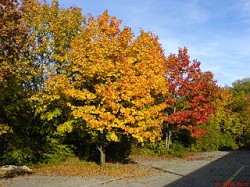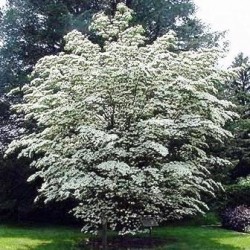Skip to a section:
- Costs – See what the cost of tree maintenance and removal are in Toronto as a basis of comparison for your quote from arborists.
- FAQs – Learn more about the tree culture of Toronto as you go into tree planting season.
- Services – If you need more information or help planting and removing trees, we have the list of pros near you to call.
How Much Do Tree Services Cost in Toronto?
Toronto, much like the neighboring cities in Ontario, is a haven for home and land owners that love to grow and maintain trees. While considering any type of tree service, it’s important that homeowners understand the specific pricing intricacies that come with tree removal, stump removal and tree trimming, pruning and cutting before making a decision.
How Much Does Tree Removal Cost?
Tree removal can cost anywhere from $170 to $960. There is a variety of factors that contribute to the price of having a tree removed. Although the type of tree will have an affect on how much you are charged, more significant factors include the height of the tree, whether the tree is very near to electric wires and power lines, and if you want the stump to be removed as well.
How Much Does Stump Removal Cost?
A medium stump can, on average, cost between $75 and $130, while the removal of a large stump can cost anywhere from $85 to $150. The process of removing a stump from a previously removed tree can vary in cost due to its size. The price for the grinding and removal of a tree stump can be divided into two separate structures, the labor price and equipment price. In regards to labor, you will be charged a certain amount per hour while equipment charges are based on the special equipment used for the job.
Average Cost of Tree Maintenance in Toronto
Homeowners should look at paying an average of $525 to $725 for tree maintenance. When looking to maintain your trees, it’s important to know what that maintenance will cost. When doing it yourself, there are several factors involved. You need to look out for insect and bacteria diseases that could be affecting the health of your tree. Adding fertilizer and providing water on a consistent basis is one of the key aspects of tree maintenance. A professional arborist can do most of this for you at a cost.
Toronto Tree Facts & FAQs
Toronto is home to many different types of trees, but homeowners in the area need to be aware of the climate and regulations of the city before they consider planting anything to avoid problems down the road. The following are a number of facts that will better prepare you for choosing a tree service.
Tree Service Tips & Regulations
Since everything to do with the maintenance and removal of city trees is presided over by the General Manager of Parks, Forestry and Recreation, you must first receive the General Manager’s written approval if you want to remove a city tree. The Urban Forestry will then inspect the tree so as to come to a conclusion about whether or not it should be removed. If it is agreed upon, they will schedule the tree to be removed, after which another one will be planted.
If you’re looking to remove a tree, it’s important to know during which months you should do so. It is possible at any time of year, but the best times happen to be during the early spring months of March and April. The worst time to do so is likely in the dead of winter as it makes the process more arduous and difficult. As a home or land owner, it’s essential that you properly maintain the trees on your property. Apple and crab apple trees, in particular, are quite difficult to maintain, especially since you must deal with all of the falling fruit, which can be bothersome.
You are allowed to plant trees near power lines, but you must know the tallest height the tree can reach at full growth as there must be a few feet between the top of the tree and the power lines. It’s important to know that planting a tree near power lines will invariably end up costing you more if you plan to have the tree removed.
Toronto Provincial and Most Common Trees
 The provincial tree for Ontario happens to be the Eastern White Pine. It was named as such in 1984. Within the city of Toronto, the most popular and common trees are the Norway maple (Acer platanoides), Siberian elm (Ulmus pumila), silver maple (Acer saccharinum), Manitoba maple (Acer negundo), white mulberry (Morus alba), eastern white cedar (Thuja occidentalis) and the little leaf linden (Tilia cordata).
The provincial tree for Ontario happens to be the Eastern White Pine. It was named as such in 1984. Within the city of Toronto, the most popular and common trees are the Norway maple (Acer platanoides), Siberian elm (Ulmus pumila), silver maple (Acer saccharinum), Manitoba maple (Acer negundo), white mulberry (Morus alba), eastern white cedar (Thuja occidentalis) and the little leaf linden (Tilia cordata).
 The tallest tree in Toronto is the little leaf linden, which stands at 30 to 40 meters, while the shortest tree is a tie between the white mulberry and eastern white cedar, which both stand at around 15 meters tall. If you’re looking for trees that will thrive the most in the cool Toronto climate, native trees do best, though the eastern rosebud, flowering dogwood, rose of sharon, sweetgum, London plane and Kwanzan Japanese cherry tree also do particularly well in the Toronto climate.
The tallest tree in Toronto is the little leaf linden, which stands at 30 to 40 meters, while the shortest tree is a tie between the white mulberry and eastern white cedar, which both stand at around 15 meters tall. If you’re looking for trees that will thrive the most in the cool Toronto climate, native trees do best, though the eastern rosebud, flowering dogwood, rose of sharon, sweetgum, London plane and Kwanzan Japanese cherry tree also do particularly well in the Toronto climate.
If you’re looking for delicious fruit, it’s also possible to grow fruit trees in Toronto. Some of the most popular fruit trees are pear, apple and cherry trees, though you can grow your own raspberry and plum trees as well. It’s inadvisable to grow lemon trees in Toronto as they are of the tropical variety.
Tree Diseases
There are a large number of diseases that can affect trees in Toronto. Among these, anthracnose, maple wilt and Dutch elm disease are some of the most important ones to look out for, with Dutch elm disease being the most dangerous by far. You can best identify this by checking to see if leaves are wilting and turning yellow. In general, the best means of keeping your trees as healthy as possible is by maintaining them on a consistent basis.
Local Tree Services in Toronto
Featured Tree Services in Toronto
Four Seasons Tree Care
Phone: (416) 410-8770
Service Areas: Toronto and surrounding GTA
Services Offered: arborists reports, tree management plans, consultations, tree pruning, shrub pruning, tree removal, shrub removal, structural support systems, stump grinding, insects and diseases, root injected fertilization, aeration and soil amendments, mycorrhizae inoculation, root crown examination, skoot rodent repellent, anti-desiccant applications, planting, firewood delivery
Website: http://www.fourseasonstreecare.com
